What is this research about?
Our project aims to clarify how the wilting of leaves affects the internal leaf structure and what consequences such anatomical changes have for leaf photosynthesis.
Limited water availability triggers numerous reactions within plants. One of the most clearly visible signs of drought is the wilting of leaves. But little is known about what actually happens inside a leaf when it wilts. This project aimed to resolve how wilting changes leaf anatomy, and how this affects the ability of leaves to take up carbon dioxide (CO2) from the atmosphere, which is used for plant growth and development.
It is well-known that drought-stressed leaves have a reduced capacity to take up carbon dioxide during photosynthesis. Recent scientific research has focused on how drought affects the biochemical reactions of photosynthesis; surprisingly, the potential impact on photosynthetic performance of anatomical changes caused by wilting has been neglected. Thus, the goal of our research was to examine the effect of wilting on the internal structure of leaves as well as how such changes affect the photosynthetic process. We also studied if and how rehydration reverts these effects.
How to examine leaf anatomy?
Because widely-used microscope techniques affect the water-status of the leaf, we used state-of-the-art three-dimensional leaf imaging through high resolution X-ray computed tomography. This technique allowed us to monitor living leaves of soybean and poplar during dehydration, and to measure photosynthesis at the same time using a custom-built set-up.
What was found so far?
We found that wilting does not reduce the leaf area much, but the leaves became up to 10% thinner. Our results showed that the cells in leaves of both species shrink in volume when wilting. This collapse of the leaf structure decreases the amount of internal surface area that is available for CO2 diffusion, which in turn limits photosynthesis. In both species, rehydration allowed for a near complete recovery of the leaf structure, but the rate of photosynthesis only recovered in poplar. This may be due to the fact that in poplar, much of the initial water loss occurs in the outermost cell layers (the epidermis) keeping photosynthesizing cells deeper in the leaf hydrated longer.
What are the implications?
Our work highlights the importance of leaf anatomy, in addition to leaf biochemistry, for plant performance under adverse conditions. We showed that leaf anatomy is not invariant over time: changes in the water status can affect the internal structure within minutes. Such changes in structure have consequences for photosynthesis, and by extension, growth and survival of the plants. We found that photosynthesis in the more rigid poplar leaves was able to recover after a water deficit, whereas the photosynthesizing cells in the more fragile soybean leaves had lasting damage. Breeding efforts selecting for leaf traits that allow recovery from severe wilting can improve overall photosynthetic performance and may allow for a yield advantage under future climate conditions.
Methods
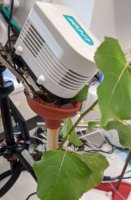
Gas-exchange measurements
Leaves of poplar and soybean were characterized of gas-exchange characteristics. In a subsequent experiment, gas-exchange was measured during dehydration and rehydration of these leaves. People involved: Miao Ye, Assiyeh Hamidipour, Natascha Lujiken, Moritz Schneck, Elisabeth Weiss, Tuuli Myllynen, Marie Matoušková, Klara Voggeneder, Mona Nazari, Josef Gadermaier
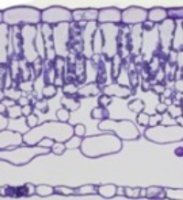
Ultra-thin serial sectioning
After fixating the leaf samples and sectioning, leaf anatomy was examined using light microscopy. People involved: Nicole Drexler (Vienna Biocenter Core Facilities GmbH), Assiyeh Hamidipour, Klara Voggeneder
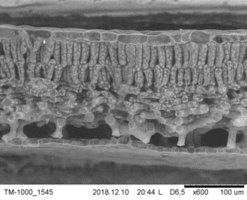
Scanning electron microscopy (SEM)
Leaf samples were rapidly frozen in liquid nitrogen, freeze-fractioned and examined using SEM. People involved: Assiyeh Hamidipour, Miao Ye, Tuuli Myllynen, Elisabeth Weiss
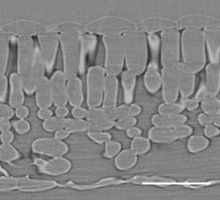
Microcomputed Tomography (microCT)
microCT was used to obtain 3D images of living leaves during dehydration and rehydration. People involved: Guillaume Theroux-Rancourt, Miao Ye, Natascha Lujiken, Klara Voggeneder, Elisabeth Weiss, Marie Matoušková, Mona Nazari
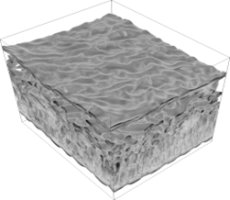
Image analysis
Manual tracing and deep-learning algorithms were used to segment the images. Python and R scripts were used to extract anatomical data. People involved: Miao Ye, Assiyeh Hamidipour, Klara Voggeneder, Elisabeth Weiss, Tuuli Myllynen, Mona Nazari, Guillaume Theroux-Rancourt
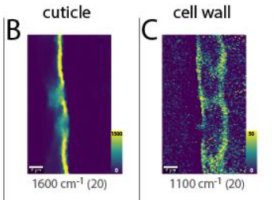
Raman Microscopy
The chemical and anatomical properties of the poplar cuticula was examined using Raman microscopy. People involved: Peter Bock, Julia Bock
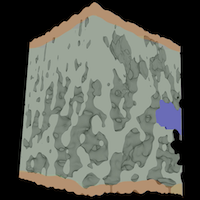
Carbon isotope discrimination
Estimates of mesophyll conductance were obtained by combining gas-exchange and carbon isotope discrimination. People involved: Simon Leitner

Diffusion modelling
Gas-diffusion in a 3D leaf was modelled using analytical and numerical methods. People involved: Jana Valigurska